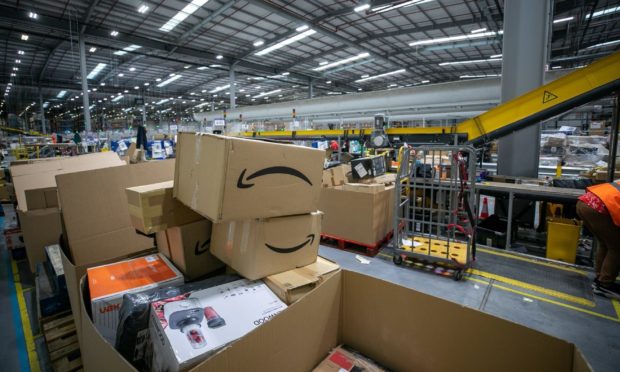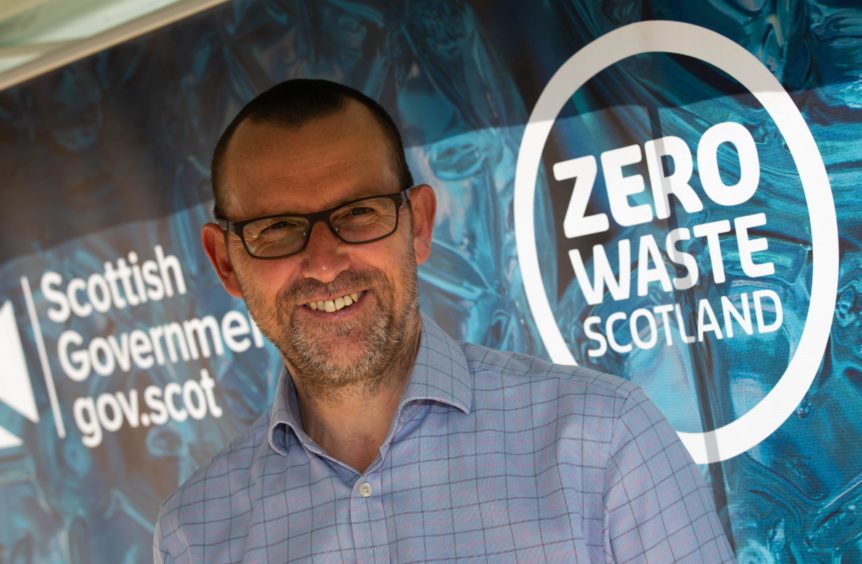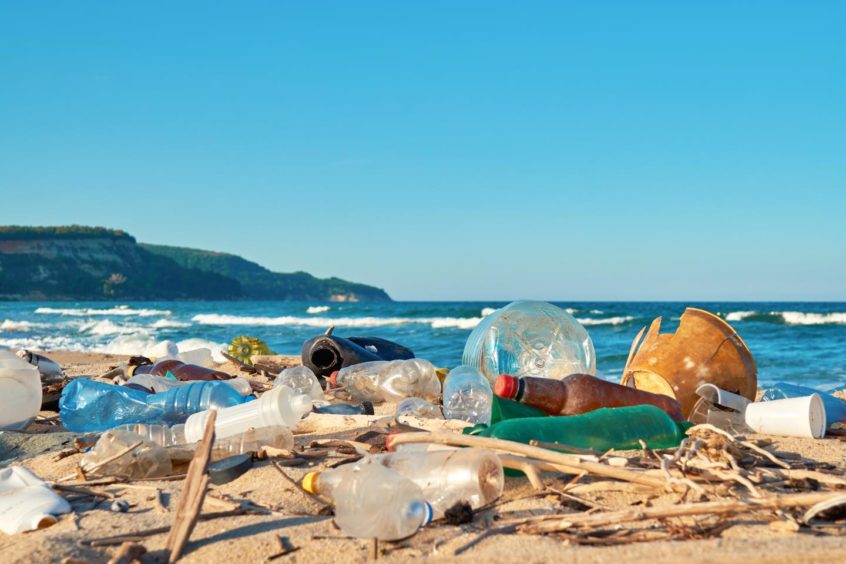There was widespread anger this week after ITV News reported Amazon was destroying millions of items of unsold stock every year – with footage shot inside the online retail giant’s Dunfermline depot. It’s a symbol of our broken system, says Iain Gulland of Zero Waste Scotland, but there is plenty we can do as individuals to make a change.
We get through far too much stuff. That pretty much sums up the main cause of the climate crisis.
So reports earlier this week that Amazon is sending brand new electronic goods to be destroyed are upsetting.
But they are also a sign of a broken system where we mine precious, finite resources from the Earth to make products – only to throw them away after a short amount of time.
It is all the more upsetting if this is done because it’s cheaper than actually using them. Business leaders should recognise the huge social and environmental value of existing products and ensuring they last as long as possible.
The process of mining, manufacturing, transporting, using and disposing of products incurs planet-warming carbon emissions.
When we dispose of a product, particularly a new one, we are wasting the embedded carbon emissions, not just the physical item itself.
Our tendency to rely on over-consumption and waste in this way is the main driver the climate crisis.
How big is your footprint?
Earlier this week, Zero Waste Scotland published a new landmark report: The Scottish Material Flow Accounts, that reveals the size of Scotland’s consumption footprint for the first time.
The research found that each year the average Scot uses up more than double the amount which it’s believed we can each safely consume to live well and keep our planet healthy.
The average Scot consumers 18.4 tonnes of materials every year – that’s the equivalent of 50kg per week on average. Academics agree a sustainable level of material use, which would still allow for a high quality of life, is about eight tonnes per person per year.
The report paints a picture of the scale and nature of Scotland’s consumption by calculating all the raw materials used to make products (e.g. oil and metal ores) and all the finished products we consume, whether made in Scotland or imported.
1/5
The true cost of Scotland’s consumption has been revealed today in our ground-breaking Scottish Material Flow Accounts report: https://t.co/pClVAgWy06The report concludes: 👇#ConscientiousConsumption #COP26 pic.twitter.com/qo791LV3Xc
— Zero Waste Scotland (@ZeroWasteScot) June 23, 2021
Materials use in Scotland is unsustainably high and our habit is literally costing the Earth.
More and more people want to do their bit to end the climate crisis but aren’t sure how to go about it.
Flying less, driving electric vehicles instead of petrol or diesel, and switching from oil and gas power to wind and other renewables are important but most of the damage we’re doing is caused by everything we consume and throw out.
Every time we buy something new we use up more of our limited virgin materials to produce and deliver it.
One of the biggest problems is that around half of all the stuff we consume is imported from overseas, from laptops to fruit and veg.
We can all make a change
Obviously, we can’t live on thin air. But we can make better choices about everything we choose to use.
The good news is there are relatively simple and effective changes which we can make in our everyday lives to stop trashing the planet without reducing our standard of living.
Asda recently announced it’s opening its first Scottish refill store this summer [August 2021] to help customers reduce, reuse or recycle their supermarket packaging.
Refills will include popular products from global retail giant Unilever, such as Persil. Crucially, Asda has pledged that it will not charge shoppers more for choosing to buy greener, so more people can afford to play their part.
Everyone who avoids needless packaging by refilling reusable containers instead is reducing the amount of stuff they get through.
Food waste is one of the greatest causes of the climate crisis and it also wastes all the resources that went into producing and transporting that food.
If food ends up in landfill it rots to produce methane, one of the worst greenhouse gases. Ironically, while there are problems with the way we use plastic, food waste is actually worse for the planet than plastic.
Our Love Food Hate Waste programme has a range of tips to help everyone waste less food, from making a shopping list to tasty recipes for leftovers.
Don’t buy, borrow
One of the best ways to reduce the amount of other stuff you get through is to borrow or lease instead of buying.
It’s often said that the average electric drill is only used for 11 minutes in its entire lifetime.
So, it makes sense to use Scotland’s growing network of tool libraries lending people everything from DIY and gardening gear to musical instruments, clothes and even bouncy castles.
If you have to buy something, then buying second-hand will cut the amount of stuff you consume because you’re buying something that already exists – so it doesn’t use up any more raw materials.
It’s another key part of what we now know as the circular economy.
It doesn’t really matter what we call it though, we just need to live by it so Scots and the planet both survive and thrive.


